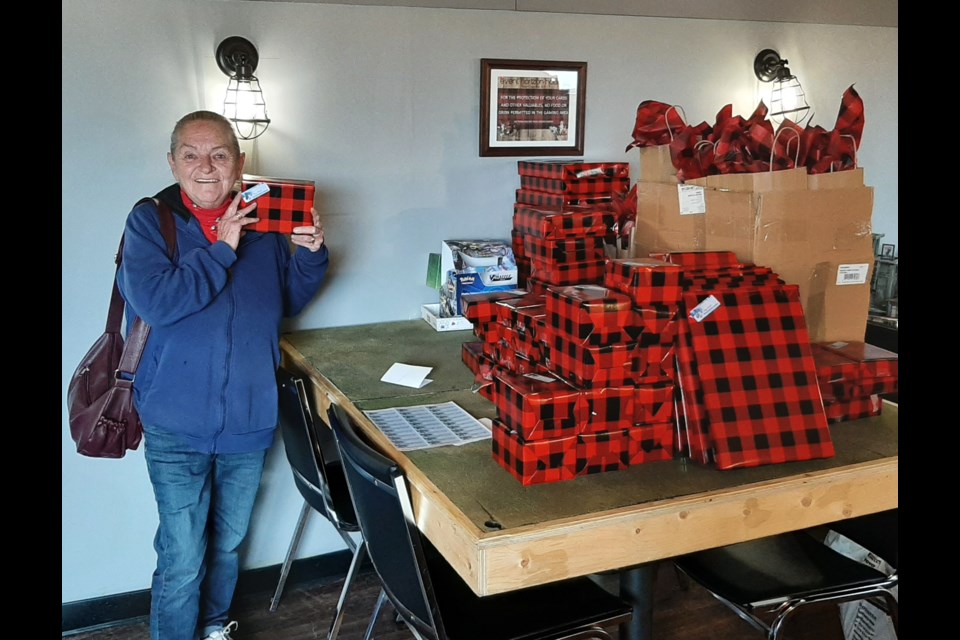Before the pandemic started, the Georgian Bay Métis Council did not have an office.
“We did everything from our garage,” explains Heather Garratt, a volunteer with the council, whose husband has headed up the organization for nine years.
The council has grown steadily over the years, and in the last three years they’ve expanded their volunteer list from five people to 150 volunteers.
“People just want to help,” says Garratt, who organizes events for the local Métis population like the fish fry, the Rendez-Vous — a celebration in June — the Christmas toy drive, and holiday hamper delivery.
Each year, the council fills hampers with everything you need for a holiday meal — a gift card for protein, potatoes, carrots, gravy, fruit cake and popcorn.
Last year, the council put together 100 hampers, this year they’ll be distributing 400.
Christmas for the kids aims to double the amount of gifts delivered from last year to 200. Gifts will be given out on December 11 and the hampers can be picked up on December 21.
The hampers and gifts are not only for citizens of the Métis nation, but anyone can apply by contacting the council via their website or on Facebook.
“If we have an over-abundance, we will share it with anyone that needs it,” says Garratt.
“This time of year is really busy for us.”
However, considering there were 1,300 people at the last Rendez-Vous at Discovery Harbour, and more people joining the council each year — 13 on council this year, compared to 10 last year, this not-for-profit is making the lives of local Métis better every time of year.
The local Métis population is about 16 per cent, whereas the provincial average Métis population is two per cent.
That makes this council the largest in the area, according to Garratt.
“There is this misconception that we’re First Nations,” explains Garratt, “even though we’re all Indigenous and they’re all our brothers and sisters, we’re not First Nations, and we’re not colonials either.”
Métis bridge cultures between the European and Indigenous communities.
“Many people don’t know the difference between a citizenship card and a status card,” says Garratt. Both recognize indigeneity, however, just like Inuit are considered a separate group, so are Métis.
Of the myriad ways each indigenous group is unique, Garratt uses art to demonstrate how the representation can help people understand.
“First Nations art and craft uses geometric shapes. Métis are the flower people — we do dot art,” explains Garratt.
The Georgian Bay Métis Council regularly holds education sessions about preparing game, hunting, artwork, and more.
In the last nine years, since joining council, Garratt says the council itself has changed.
“New faces have come in. People are so enthusiastic.”
When asked why she started giving her time to the council, Garratt answers stoically and with few words.
“It’s just the way I am. That’s me.”
If you’re looking for a way to volunteer and learn more about your Métis heritage contact the Georgian Bay Métis council, and “don’t be afraid to step up,” says Garratt.
The Georgian Bay Métis Council is located at 10 – 845 King Street, in Midland.



